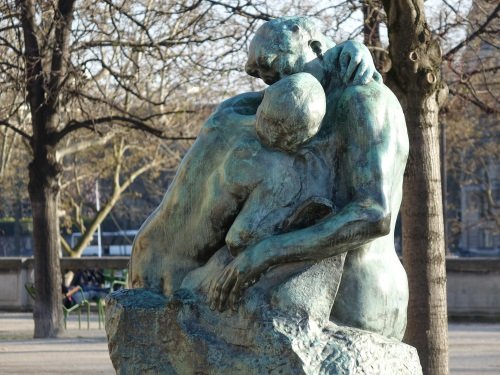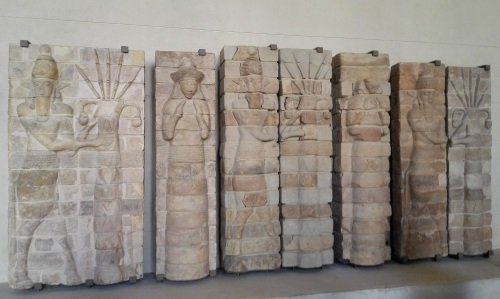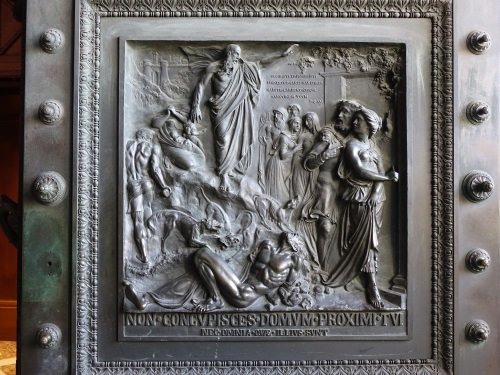I am a rather late convert to Paris – only in 2002 I visited the city for the first time and it took another 10 years for a second visit. My third trip to the French capital would be more in-depth than the first two that had covered most of the touristic route: during the past weekend I joined a small group of 12 fellow students at the Open University with whom I had been to Florence in 2015 . The organizing team had drawn up a full 4 day schedule, focusing on small art museums and architectural highlights.

"The Kiss" (1889) by Rodin, near the Orangerie
Obviously we didn’t stay within the Banks of the Seine all the time, so I’ll try to focus this report on the sites that are within the WHS area or just next to it. We stayed overnight at the recommended Ibis Bastille, quite a steal at 80 EUR per night in central Paris. It is located close to Le Marais, a former aristocratic area and active Jewish neigbourhood (featuring an interesting Art Nouveau synagogue by Guimard ).
Along the Seine we visited the Orangerie, an often overlooked art museum housed in a 19th century shelter for the orange trees of the garden of the Tuileries. Since 1927 it has been the home of a cycle of Monet's water-lily paintings, known as the Nymphéas. The building is surrounded by a number of precious sculptures (made by Rodin for example), quite amazing to find them here without protection.

Brick relief found at Susa, now in the Louvre
On Sunday afternoon a travel companion and I decided to give the Louvre a try – without having booked a ticket beforehand. It took us only 10 minutes to get in, most other tourists were probably spending the sunny day outside. I had never been to the Louvre before, but had prepared a bit with researching a new connection called In the Louvre (we have similar ones for the British Museum and the Pergamon Museum ). I was about the only person in the archaeological wing of the museum that afternoon. Like its peers in London and Berlin, quantity (and sometimes size) seems to prevail over telling a story. But they do have interesting objects from WHS such as Susa and Byblos.
Unfortunately we do not have a thorough description of the core zone of the Paris WHS, so sometimes it’s a bit of a guess why one building has been included and another one hasn’t. One of the oddities of the Banks of the Seine WHS map is the peak in the center. The core zone here ends at the Church of La Madeleine, a “visual end” from the Place de la Concorde. Sometimes sight lines seem to have been included, but not those too far away from the river (such as the Pantheon). La Madeleine’s appearance is very un-churchlike, since it originally was built as a temple for Napoleon’s troops. It’s a firm neoclassical structure. Unlike many other buildings in Paris it hasn’t been polished up yet. The interior is gloomy as well.

Relief on door of La Madeleine
In the end I enjoyed my third visit to Paris. We visited a mix of very different things , of which the Fondation Louis Vutton (Frank Gehry, 2014) and the small but delicate Picasso museum stood out. Please, no more Impressionism for me though. And I can do without white sculptures of classical or French national heroes for a while too.



